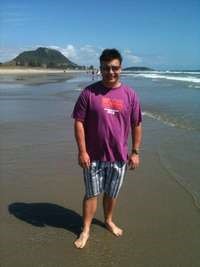
It’s been too long between posts! Our first two weeks back in Sydney have simply flown by. I’ve found myself drawn straight back into work with a stream of meetings, emails and conference calls. As has been the pattern for many years I’ve found myself up before breakfast most days for calls and back on the phone for a few more after dinner. Antarctica is rapidly becoming nothing more than a distant memory!
The weather has been simply glorious since our return. Temperatures have peaked in the mid-30s while Australia Day, the nation’s national holiday, proved to be Sydney’s hottest public holiday for more than twenty years. Garry spent the public day enjoying a traditional BBQ with friends while I worked as I had an American business colleague in town. However, it wasn’t all toil. We broke away for a couple of hours shortly before noon to walk across the harbour bridge and enjoy a leisurely lunch at Circular Quay.



We timed our excursion perfectly. As we crossed the bridge the annual boat regatta was drawing to a climax with vessels churning up the water in all directions. As noon approached a ceremonial gun opposite the Opera House let off a booming 21-gun salute. Lunch was then followed by a ferry ride back to Milson Point to resume working for another couple of hours.
The walk across the bridge is just the start of a new regime for myself. I'm determined to lose the "Heathrow Injection" obtained while living in London. I first heard this phrase about six years ago when a returning expat noted that everyone relocating to the UK inevitably puts on 10-20 pounds. At the time I simply chuckled. However, Garry and I soon discovered it was no laughing matter. The cold weather and indoor lifestyle in London really does encourage considerable weight gain. In an attmept to reverse the damage I've now started walking to and from work; a distance of almost six kilometres daily. Garry has also put us on a low-fat, lean meat and salad diet.
On the home front things are slowly falling into place. We took procession of our apartment mid-week once our tenants had vacated. The initial inspection proved a little disappointing. While the tenants had generally kept the place in good condition it looked tired. It’s been at least ten years since the walls were last painted and its suffered inevitable wear and tear. I think we’ve found the motivation we needed to plan our long mooted renovation!
For now we’ll repaint the entire apartment and repair minor dings. Garry has already been down to the hardware store several times to purchase trestles and painting gear. Last night we settled on colour palette. We’re planning a vibrant orange/red feature wall, soft brown and cream highlights and a brilliant white ceiling. It’s a huge paint job that’s bound to keep Garry busy for the next week.
We’ve been told by our removal company that our household effects should be released from customs and quarantine some time after February 7. The ship carrying our container safely arrived in Sydney on January 23. Garry had been tracking its imminent arrival on the Internet almost daily. We’ve also purchased a new washing machine and a new TV for the bedroom. Piece by piece our lives are falling back into place.











































































